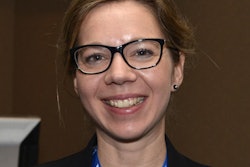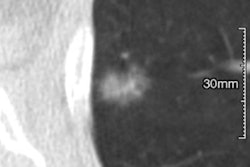
Early in 2016, the board of the Radiological Society of the Netherlands (Nederlandse Vereniging voor Radiologie [NVvR]) started an initiative to develop a strategic vision for the future role of Dutch radiologists. Together with our society members and subspecialty sections, we developed a "compass" to prepare for and guide us through the many challenges that are facing radiology in general.
The main challenge for the radiologist is to maintain a high level of quality, while managing an ever-increasing workload. To guarantee high-quality radiological exams and reports, subspecialization is essential, as well as an emphasis on efficient communication with our clinical partners. We have to shift attention from production to consultation.
 Dr. Hildo Lamb from the Leiden University Medical Center.
Dr. Hildo Lamb from the Leiden University Medical Center.The added value of a radiologist is clinical and technical expertise on medical imaging. The involvement of the future-proof radiologist covers the full spectrum from basic technique development, clinical validation, request approval, protocol selection, medical and technical guidance of clinical exams, reading of exams and reporting, and communication with clinical partners.
In addition, more emphasis could be on communication with patients before, during, and after imaging, thereby avoiding the situation where the radiologist becomes a commodity like a "digital doctor."
The value-based and patient-centered healthcare approach requires multidisciplinary organization. To be able to cover the entire clinical imaging spectrum, close collaboration between radiologists, scientists, engineers, imaging technicians, and patients is important. We have to shift our role from report generator to imaging consultant as part of a diagnosis-treatment team. This way, our efforts will be more visible to referring clinical partners and patients.
The current challenge is to find a way to realize these goals in routine clinical healthcare. The NVvR has defined a road map to reach these goals (see box).
Road map to the future-proof Dutch radiologist
- Development of radiologist profile
- Inform patients on role of radiologist
- Regional collaboration: Expert opinion, ICT, organizational
- National expertise and ICT network
- European representation and collaboration
- Reinforced technical education for residents and radiologists
- Healthcare evaluation programs
- Determine scientific agenda for radiology
Information and communication technology (ICT) is most likely to play a major role in the future of radiology. Regional, national, and European collaboration through an expertise network can help to guarantee top-quality radiological exams on a 24/7 basis and allow further subspecialization to increase expertise level on rare diseases.
Intramural collaboration raises several basic privacy and related ICT issues that we have to solve ourselves, so that we do not become fully dependent on external ICT partners and companies. We have to define our own ICT future for radiology. The ICT revolution has already started and we have to be heavily involved in order to determine our future role in the imaging process.
What will be the effect of ICT-based automatic image reading and report generation? We believe these ICT developments will help us to deal with the ever-increasing workload. If we can generate radiology reports with ICT, radiologists can focus on expert reading and communication as imaging consultant with doctors and patients. Because the ICT revolution is already happening and forms the core of our future work, we have to be involved today.
The same holds for basic imaging technique developments. We have to take the lead in technique development, clinical validation, and application by incorporating other fields of expertise into our radiology department -- e.g., engineering, hardware, and software development. These activities can be initiated in academic centers in close collaboration with general hospitals for fast dissemination of new techniques and innovative healthcare approaches.
Dutch scientific agenda
To determine clinically relevant research topics we are developing a Dutch scientific agenda for radiology. Based on existing healthcare guidelines and input from our society members and other stakeholders, such as patient organizations, healthcare insurance companies, healthcare providers, and governmental institutes, we will define a 10-point list with top-priority research that will change clinical practice in the next five years. This program is being supported by the Dutch National Initiative for Healthcare Evaluation.
In addition to the general issues mentioned so far, we have to focus more specifically on "radiology by nonradiologists." A new type of imaging professional is emerging, based on recently initiated bachelor and master programs such as medical technology or technical medicine at technical universities. These new medical technologists can help us to cope with the exponentially increasing demand for radiological exams, while respecting quality and healthcare sustainability. We have to redefine our role as clinical radiologists together with these "new kids on the block."
Special attention is needed on collaboration with other medical doctors that are interested in performing radiological exams. Ultrasound exams by general physicians, nephrologists, hepatologists; CT/MRI exams by orthopedic surgeons, neurologists, cardiologists; and radiological interventional procedures by vascular surgeons, (interventional) neurologists, and cardiologists are just some examples of the kinds of imaging carried out by nonradiologists. We will actively reach out to other medical specialties to discuss and define the most efficient and sustainable approach for medical imaging.
Dr. Hildo Lamb is a professor of radiology at Leiden University Medical Center and a board member of the Radiological Society of the Netherlands (science and European affairs).
Originally published in ECR Today on 5 March 2017.



















